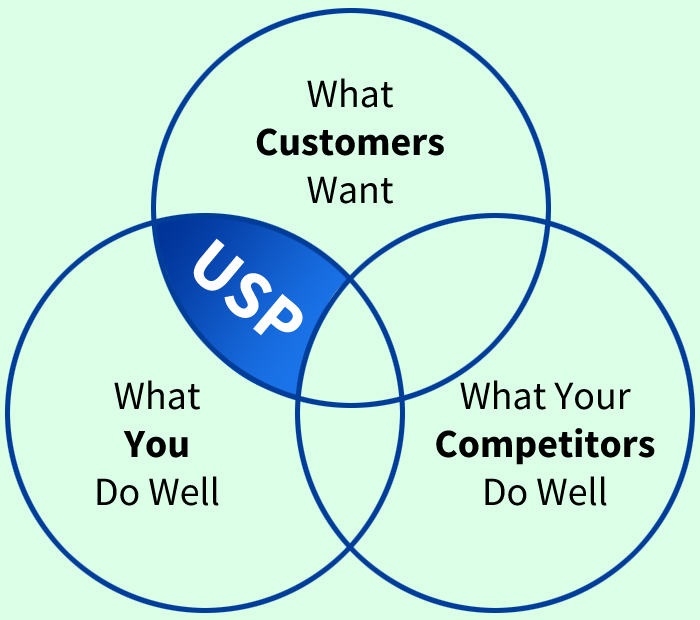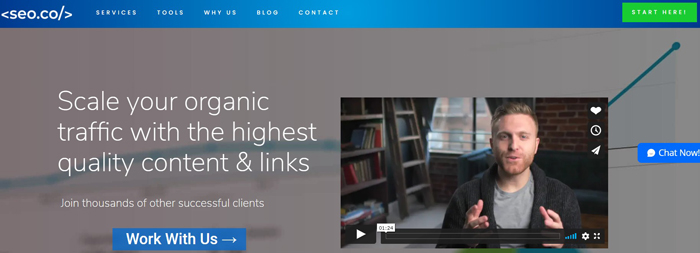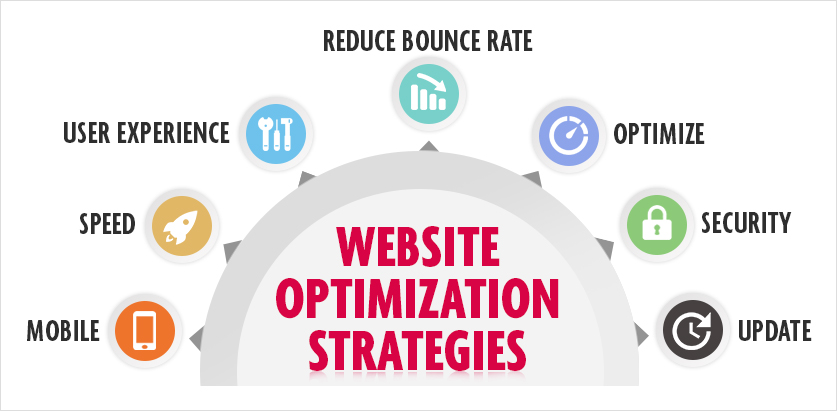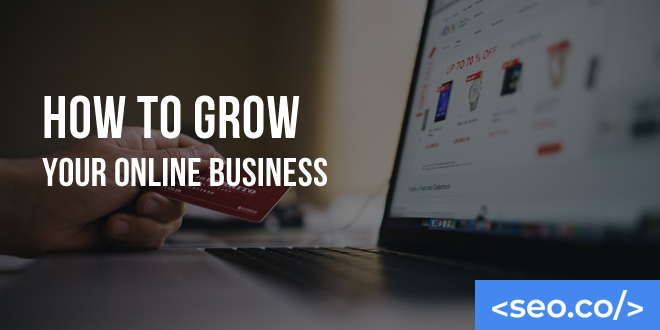Starting a successful online business is easy.
You buy a cheap domain, set up hosting, use a canned website design template from a drag and drop site builder, have a Fiverr designer create you a logo, claim your social media marketing profiles, and you’re up and running.
Growing your online business is much more challenging and strenuous.
In a low-entry-barrier environment, websites must offer better content, content created quickly, better customer solutions, better products or superior services than their competitors to WIN in the online marketing game.
There’s a reason that 90 percent of startups fail – including 21.5 percent within the first 12 months: startup marketing is TOUGH!
And there isn’t much you can accomplish as an own online business if you aren’t willing to roll up your sleeves and get to work.
But here’s the deal…not all startups fail. Why can’t yours be the one out of 10 that survives and goes on to have success?
Just as the formula for failure has been made obvious, there’s a pretty clear roadmap to success. It requires a lot of hard work, discipline, and patience – but there’s no mystery surrounding the secret to business online growth.
In this guide, we’re going to walk you through some of the specific tips, techniques, and frameworks you can use to catalyze growth within your business online. And though it’ll never be easy, your commitment to embracing these strategies will yield a tremendous return on investment.
Table of Contents
1. Get Clear on Who You Are

It’s nearly impossible to build a successful business if you don’t have a clear and concrete vision of your business online, its purpose, and the value it brings to the marketplace. More specifically, you must take the time to develop a unique selling proposition (USP).
Your USP is basically the one or two elements that make your business stand out from the competition. It’s a powerful and concise statement that communicates to the target marketplace why potential customers should care about you.
Whether or not they overtly display it in their marketing and branding, every successful online company has a USP that drives their efforts.
Here are some examples from well-known brands:
- HelloFresh: America’s most popular meal kit.
- Robinhood: Investing for everyone.
- Warby Parker: Try 5 frames at home for free.
- Head & Shoulders: Up to 100% dandruff protection.
- Anchor: The easiest way to make a podcast.
You can visit any successful online company’s website and you’ll be able to identify their USP in a matter of seconds. The question is, what’s yours?
When dreaming up your USP, make a list of things you do really well. Then make another list of elements that you do that the competition doesn’t. Finally, look for some crossover between the two lists and come up with a positioning statement that communicates how you add value to the customer in ways that your competitors simply can’t.
Once you have your USP, let it permeate every element of your marketing and branding strategies.
2. Create Detailed Buyer Personas
Understanding your brand is important. But it’s just as crucial that you understand who your target audience is. Because it’s at the intersection of these two points that the magic happens.
Hopefully, you already have some idea of who your target audience is and have some data, analytics, and basic information about demographics and spending patterns. (If you’re just starting out, you may have to make some inferences and adjust as more information becomes available.) Use this information to create buyer personas.
Buyer personas are basically semi-fictional representations of your customers (based on what you know). You give them names, pictures, and detailed biographies that explain who they are, what they want, and why they do the things that they do.
Most businesses will have somewhere between one and five buyer personas. Smaller companies will likely only have one or two to start, but could eventually see this number grow along with the business.
There are plenty of buyer persona templates available online. Run a quick Google search and you’ll find some inspiration. However, you’ll want to include details like background information, demographics, hobbies, interests, goals, challenges, financial status, spending habits, and common objections. Then you’ll develop a marketing message and elevator pitch that’s tailored to that specific persona. (All of this can be distilled into a single document for easy reference.)
You may also find it helpful to create “negative” buyer personas. These are personas that you do not want as customers. This can help you avoid pouring marketing dollars into initiatives that produce low-returning customers that yield minimal value.
3. Create a Compelling Visual Experience

We’re going to cover a lot of information on how to write killer content that communicates your USP and resonates with your target audience, but let’s pump the brakes for a moment and say something about your brand’s visual experience.
Research shows that 90 percent of all information transmitted to the human brain is visual and that 65 percent of the population are visual learners. Furthermore, it takes the brain just 13 milliseconds to interpret an image.
Your brand’s visuals are what establish that first impression with a customer. And if you want that touchpoint to be reflective of your brand and its mission, you must create a compelling visual experience. More specifically, you must come up with a visual identity.
Your brand’s visual identity is basically its proprietary blend of a logo, colors, typography, imagery, and composition styles. You want this identity to resonate with your audience, and it should be used consistently across all digital mediums (including your website, social media profiles, email signatures, advertising, etc.).
Design matters for SEO. If your site fails the design test, users will bounce and your online rankings will fall.
The good thing is that, once you’ve identified your USP and created detailed buyer personas, developing your visual identity is fairly straightforward. Consider using a combination of color psychology and specific visuals that you know resonate with your target audience.
If you’re inexperienced in this area, you’ll find it helpful to hire a web designer or branding expert to at least develop your initial creatives and cast some vision for what your brand should be.
4. Offer Exceptional Customer Service
Maya Angelou once said, “People will forget what you said. People will forget what you did. But people will never forget how you made them feel.”
Though she wasn’t talking explicitly about business, the takeaway is pretty clear for us as business owners. Because at the end of the day customers will remember your business based on how you made them feel.
It’s for this reason that you should commit to offering exceptional customer service. You might not have the best product in the industry, the most creative marketing, or the largest ad spend, but there’s nothing stopping you from offering exceptional customer service.
Exceptional customer service can cost time and money, but the short-term expense sets you up for long-term gain. Happy customers tell their friends. They come back and buy more. They vouch for you when there’s a future problem. And they’re much more likely to give you the benefit of the doubt.
5. Invest in High-Quality Content
As the old marketing cliche says, content is king. No matter what other marketing trends come and go, you can rest assured that content will still hold its rightful place on the throne of business growth.
If you want to catalyze growth, it starts with developing content (creating visuals, videos and writing blog posts). You won’t become an overnight success story, but with months and years of investing in your content, you’ll eventually start to see benefits such as:
- Increased brand visibility
- Improved brand reputation
- More time spent on your website
- Higher website and landing page conversion rates
- Enhanced SEO visibility and traffic
- More social and referral traffic
- Greater customer retention
- Increased clarity and less confusion
While the importance of content has never changed, the way in which you execute has. It used to be that brands who pumped out the most content had the best chance of improving their SEO and generating traffic. But that’s not necessarily the case any longer.
Today, it’s all about quality over quantity. You’re much better off producing two high-quality content assets per week than half a dozen low-quality blog posts that fail to resonate with your target audience.
Quality content is unique, and original, and speaks to your customer’s pain points. It’s easy to read, digestible, and typically in-depth enough to add real value. Quality content is consistent with your brand and educates, informs, or motivates customers to take action.
6. Optimize Your Website for SEO

Search engine optimization (SEO) is an extremely important and integral element of growing an online business. It’s the key to organic visibility and can set you up to generate organic search traffic for years to come.
While there are hundreds of factors that influence search rankings, it ultimately comes down to a few key elements:
- Technical optimization. This refers to all of the nitty-gritty elements that happen on the back end of your site. We’re talking about meta tags, HTML, site layout, page loading speed, image optimization, URLs, and other enthralling factors.
- Keyword strategy. Though the days of keyword stuffing are far behind us, there’s still something to be said for targeting natural, long-tail search terms that tell Google and other search engines what your content is about.
- Quality content. As mentioned, content rests at the core of all online marketing. And in order to generate SEO results, you’ll need a steady infusion of onsite content that tells the search engines your website is a valuable resource worthy of sending traffic.
- Link building. By most estimates, two-thirds of Google’s search engine algorithm is tied to link-related signals. If you want to improve your search rankings, you need to develop an inventory of authoritative backlinks pointing to your most important content and pages.
In order to develop a successful web presence or business’s online presence, you must find a way to hit on each of these components in a cohesive, long-term marketing strategy. And if you’re unclear of where things currently stand, an SEO audit for your website can identify weaknesses and opportunities.
7. Invest in Link Building
As mentioned in the previous section, links are still considered the strongest factor in Google’s search ranking algorithm. And if you want to generate organic traffic that’s scalable over time, you must invest some resources into link building for SEO.
When it comes to referral link building, there are really two schools of thought:
- Natural link attraction. This can be described as the “if you build it, they will come” approach. You create high-value content assets, share them with your own audience and network, and then wait for people to naturally find it and link to it. Depending on the size of your network and the quality of the content, this could take anywhere from days to years to generate a meaningful volume of links.
- Manual link building. Because natural link attraction takes so much time, it’s also recommended that you give manual link building a try. This is where you develop a quality piece of content that’s tailored to a specific publisher. Then you offer to publish this piece of content on that publisher’s website as a guest blogger. Inside the content, you include one or more links pointing back to your domain. Bam! You just earned some backlinks. For more information on manual link building, we suggest taking a look at our beginner’s guide to link building for SEO.
At the end of the day, growth-conscious online businesses are going to pursue both strategies simultaneously. And with enough of an early investment in manual link building, you’ll eventually start to see your link attraction approach pay off as well.
8. Build an Email List – Email Marketing
There are a lot of parts of marketing that you ultimately have no control over. Take social media as an example. You can amass an incredible following on Twitter or Facebook – generating tens of thousands of followers and high-level engagement – but all it takes is a single tweak in the algorithm and it can all go, poof. All it takes is one broken rule (intentional or otherwise) and those platforms have the right to pull the plug.
The same goes for advertising, SEO, referral social media networks, and other forms of lead generation. But do you know what you do have total control over? Your email list. No matter what happens, you own your email list and can take those names with you.
The question is, do you have an email list?
If growth is a high priority, building and marketing to an email list should be one of your top priorities. It takes time and requires quite an investment of resources, but the long term SEO ROI of an engaged and qualified email list is invaluable.
There are a number of ways to build an email marketing list, but the classic method of developing a landing page, driving targeted traffic to that page, dangling a lead magnet, and getting people to opt in to receive the magnet is a proven strategy that continues to work year after year.
There are plenty of organic ways to build an email marketing list, but you’ll accelerate the efforts of your email marketing campaigns if you’re willing to spend some money on advertising. Even if it’s just a couple of hundred dollars per month, seeds sown today have the potential to develop into a ripe and abundant harvest in six months or two years down the road.
9. Learn the Art of Direct Response Copywriting
There’s copywriting and then there’s direct response copywriting. The former encompasses any number of approaches, including information, education, and branding. The latter is all about making a sale…right now.
Direct response copywriting is the art of creating high-value content that exposes a person’s pain point, connects them to the product on an emotional level, and then provokes them to take action by justifying their emotions with sound logic that can’t be denied.
If you’re interested in learning the art of direct response copywriting, that’s great. Just be warned that it takes a special amount of skill and experience. If you lack the time, hiring a talented writer to step into this role for you on an outsourced basis would be wise
10. Partner With Influencers
Social media can be great, but be wary of pouring a ton of resources into building up a social media following. If you’re a small brand without much clout or any real connections, you’ll often find that you end up speaking to an empty echo chamber. (If you do want to invest in social media, we’d recommend focusing on one platform – such as Instagram – and pouring 100 percent of your social media efforts into that profile and audience. Then you can always add another one later.)
The better way for small, growing brands to win with social media is to partner with influencers. These are individuals who already have a strong following on specific social media platforms and have proven that they can influence the buying decisions, thought patterns, and loyalty of their followers.
Many influencers will actually partner with brands, for a fee, and represent or endorse your brand. And assuming you partner with the right individual, this can be an incredible way to gain instant credibility. It’s all about aligning yourself with the right person.
11. Hire Lean and Treat Your People Well
It’s never been easier to run a lean business. Avoid taking on unnecessary overhead whenever possible. This is especially true when it comes to hiring people.
It takes more than just an employee’s monthly salary to bring them on. There are recruiting costs, onboarding costs, taxes, benefits, and a laundry list of other small and large expenses. So if you’re going to hire someone, you better be sure they’re bringing you significant value.
The better strategy for growth-conscious business owners is to outsource SEO tasks and partner with a combination of freelancers and part-time workers. This allows you to scale without feeling bloated.
12. Give, Give, and Give Some More
Their final idea is more conceptual than practical, but it’s something that you can benefit greatly from. Whether it’s online sales or networking, you should follow the mantra of giving, giving, and giving some more. Then when you’re ready to make an ask, give some more. Then, finally, you can ask someone for something in return (online sales).
By operating out of a place of abundance, you build a good rapport and simultaneously compel others to return the favor. Whereas most people are playing the short game, you’re planting seeds that will continue to flourish over the long run.
SEO.co: Your Partner in Organic Business Growth
At SEO.co, we believe that online business growth starts and ends with visibility and traffic. Assuming you have a quality product or service to sell, you can essentially boil your success down to a numbers game. Are you driving enough qualified traffic to your website, in order that you can engage and convert these visitors into loyal and paying customers?
One of the best ways to generate traffic is by investing in high-quality content and authoritative backlinks that boost your brand’s prominence in the eyes of both your target market and the search engines.
Join thousands of other successful clients and discover why our SEO services, including our white hat link-building and content marketing services, are considered the premier online growth catalysts in the industry.
Contact us today and we’ll be happy to provide you with a free website assessment!
- How to Tell if an SEO Agency Is Trustworthy [in 5 Steps] - April 7, 2025
- Why Isn’t My Website Ranking on Google? [9 Reasons + Fixes] - April 2, 2025
- Why Your Google Rankings Dropped & How to Fix It - March 29, 2025



